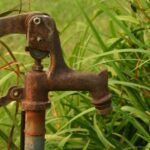How to Pump Water From a Natural Spring? Normal springs have for some time been depended upon by networks as a wellspring of consumable water because of their high worth. A characteristic spring gives a dependable wellspring of consumable water, and numerous urban communities are investigating this choice.
This comprehensive guide explains everything you need to know about pumping water from a natural spring, from locating the appropriate spring to selecting the appropriate pumping equipment. Let’s read below about “How to Pump Water From a Natural Spring?”
Table of Contents
Locating a Suitable Natural Spring:
- Research and Exploration: Before attempting to pump water from a natural spring, it is essential to do extensive research on the subject. Finding potential springs needs the support of trained professionals, geographical guide perusing, and neighborhood land research. Find locales with verdant verdure and soil that is by all accounts fairly wet; they can demonstrate the presence of underground water sources.
- Water Quality Testing: Check that the spring water is liberated from pollutants. Before you polish off the water, be certain it’s liberated from microscopic organisms and different pollutions. This is totally important to guarantee that people in the future will approach safe drinking water.
Legal and Environmental Considerations:
- Obtain Necessary Permits: Guarantee You Have Every Expected Grant, You ought to contact the fitting experts in your space on the off chance that you wish to gain the lawful prerequisites for drawing water from a spring. Respect the rules because some areas may require permits to take water in order to avoid trouble.
- Environmental Impact Assessment: Determine whether using the spring’s water would harm the environment. Attempt to minimize environmental issues to the greatest extent possible, taking into consideration the impact on the ecosystem and wildlife in the area. under request to hold the climate under check, manageable approaches to removing water ought to outweigh everything else.
Designing a Pumping System:
- Determine Water Flow Rate: How to Find the Right Siphoning Limit? The stream pace of the spring can be estimated to track down the suitable siphoning limit. You can utilize this data to choose the best siphon and build a utilitarian siphoning framework. Another thing to think about is the possibility that flow changes with the seasons.
- Selecting a Pump: Check to see if the pump you buy can meet the specific needs of your spring. Because of their convenientce and proficiency, sub siphons are broadly utilized. When selecting a pump, think about the lift height, flow rate, and energy efficiency.
- Power Source: Until you find a way to power your pump, it will not operate. Which siphon you pick with — electric, sun based controlled, or even physically worked — relies upon factors including area and accessible assets. The reasonableness, natural impact, and reliability of each power source ought to be considered.
Installation Process:
- Prepare the Site: Get the ground level and make the way of any deterrents that the spring could experience before you set up the siphon. Put the siphon in a protected spot where it will not be harmed and use it to the extent that this would be possible.
- Install the Pump: While setting up your new siphon, make certain to stick stringently to the guidelines given by the producer. While surface siphons as a rule have no unique funneling, submarine siphons are lowered in water. Siphons will keep on working actually in the event that they are totally fixed and waterproofed.
- Connect Water Pipes: Subsequent to setting up the water lines, you can associate the siphon to the water stockpiling or conveyance framework. Utilizing top notch lines and fittings guarantees that water is proficiently moved from the spring to its objective.
Maintenance and Monitoring:
- Regular Inspections: To find issues rapidly and amend them proficiently, you ought to have the siphoning framework checked frequently. Check for harm, holes, or wear and supplant any ragged or broken parts to guarantee the framework is in great working request.
- Water Quality Monitoring: Continuously watch out for the water quality. Check the water for harmful microbes and substances to ensure its potability. Adjustments to the siphoning framework or the expansion of channels could be called for.
Community Engagement and Education:
- Community Involvement: Get the area engaged with dispersing the spring water so everybody can benefit. The water supply ought to be overseen locally determined way, with occupants having a voice regarding this situation.
- Educational Programs: Water preservation, spring assurance, and feasible water utilization can be in every way achieved through instructive drives. The intention of these broadcasts is for viewers to seriously consider these issues. Assuming that you care about the water supply’s wellbeing for quite a long time into the future, you should arm individuals with the information they need.
Conclusion:
How to Pump Water From a Natural Spring
Towns and individuals can depend on siphoning water from regular springs as a reasonable and trustworthy water source. However, it is essential to emphasize the impact on the environment, adhere to the law, and involve the community in this process. By following the techniques given in this aide, networks and people can take advantage of normal springs while additionally guaranteeing their protection into the indefinite future. Responsible water management is essential for creating a future that is both sustainable and resilient, in addition to meeting urgent requirements. I hope you like reading “How to Pump Water From a Natural Spring?”

Barry, the expert behind LawnInspection.com, holds a Master’s degree in Horticulture and brings over 20+ years of hands-on experience in landscaping and lawn care. With certifications in sustainable lawn management, Barry is dedicated to providing readers with authoritative insights and practical tips for maintaining lush, healthy lawns. His extensive knowledge and commitment to excellence ensure that every piece of advice on LawnInspection.com helps transform your lawn into a green oasis with proven, eco-friendly practices. Connect with Barry on social media: Instagram and Facebook.








